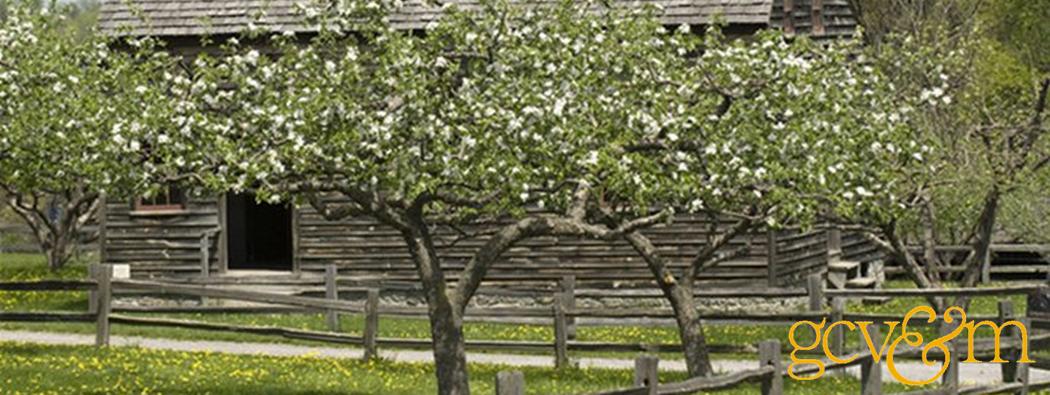Hyde House & Healthcare in the Mid-19th Century
In the early years of settlement in the Genesee Country, there were no doctors. But as hamlets and villages grew, some young medic from the East might set up practice in a doctorless community. There would be plenty of work for him. He would go about setting fractured limbs, stitching up cuts and slashes, patching up broken heads, assisting in difficult confinements, lancing boils and carbuncles, giving doses of calomel, and doing what he could for other ailments.
But there was little any country doctor knew that could help those settlers stricken with ague and the racing high temperatures and chills of Genesee Fever. Indeed, Genesee Fever (not yet recognized as mosquito-driven malaria) took an indiscriminate toll among the pioneers.
This brief sketch of a country doctor’s busy life might well apply to John W. Sterrick, resident physician here on Maple Street. In that little shop are deployed some of the tools of his trade—a scales, a mortar and pestle, an assortment of medicine bottles, vials, and tubes, a small saw, some crutches in a corner, some human bones in a cupboard, an 1874 doctor’s journal, a cupping kit, a leg brace, a doctor’s bag, and a patient’s chair. It was here the country doctor bled his patients and dispensed purgatives.
In the doctor’s office, perched on a shelf, is a phrenological head, an indirect reminder of a colorful couple in Friendship, New York. Corporal Erastus Hyde returned to Friendship after the Civil War, briefly returned to farming, acquired an interest in a shingle factory, a young wife, and a new eight-sided house. Hyde became interest in phrenology—that pseudoscience which maintains that character and mental capacity can be determined by the conformation of a subject’s skull. Such theory was later debunked by neurologists who considered phrenology a form of quackery.
But phrenology was championed by Orson Squire Fowler, a native of the Genesee Country village of Cohocton, Allegheny County. (Historical note: Orson Fowler left his father’s farm to study for the ministry at Amherst College. While at Amherst, his interest switched to phrenology. With his brother and sister, Fowler published tracts extolling phrenology and clairvoyance, and a diet of vegetables, while warning against coffee, tea, spirits, and tightly-laced dresses. In1848, Fowler published “A Home for All,” in which he announced that the octagonal with its eight sides enclosed more space that a square one with equal wall space.)
Erastus Hyde and his wife joined a spiritualist group. Julia, an accomplished musician and an ordained Methodist minister, held séances (it was said) in her parlor. In the meantime, Erastus became a homeopathic physician. Homeopathy, as you know, is a system of medicine whose fundamental principal is the law of similars—that like is cured by like. It had been observed, for instance, that quinine given to a healthy person causes the same symptoms that malaria does in a person suffering from that disease. Therefore quinine became the preferred treatment for malaria. When a drug was found to produce the same symptoms as did a certain disease, that drug was then used in small doses to treat the disease.
It is curious, isn’t it, that with his house and his practice of medicine, Erastus Hyde had a double dose of Orson Fowler? When Julia died within four days of her husband, the belief—even among sensible people—that their departed spirits frequented the old oddly-shaped house.
The old place lay empty after a fire burned the guts of the old stairwell and, of course, it was known locally as “a haunted house.” The house was dismantled, board by board, for transport to Genesee Country Village in 1975. It is now a favorite of many museum visitors.


No comments:
Post a Comment